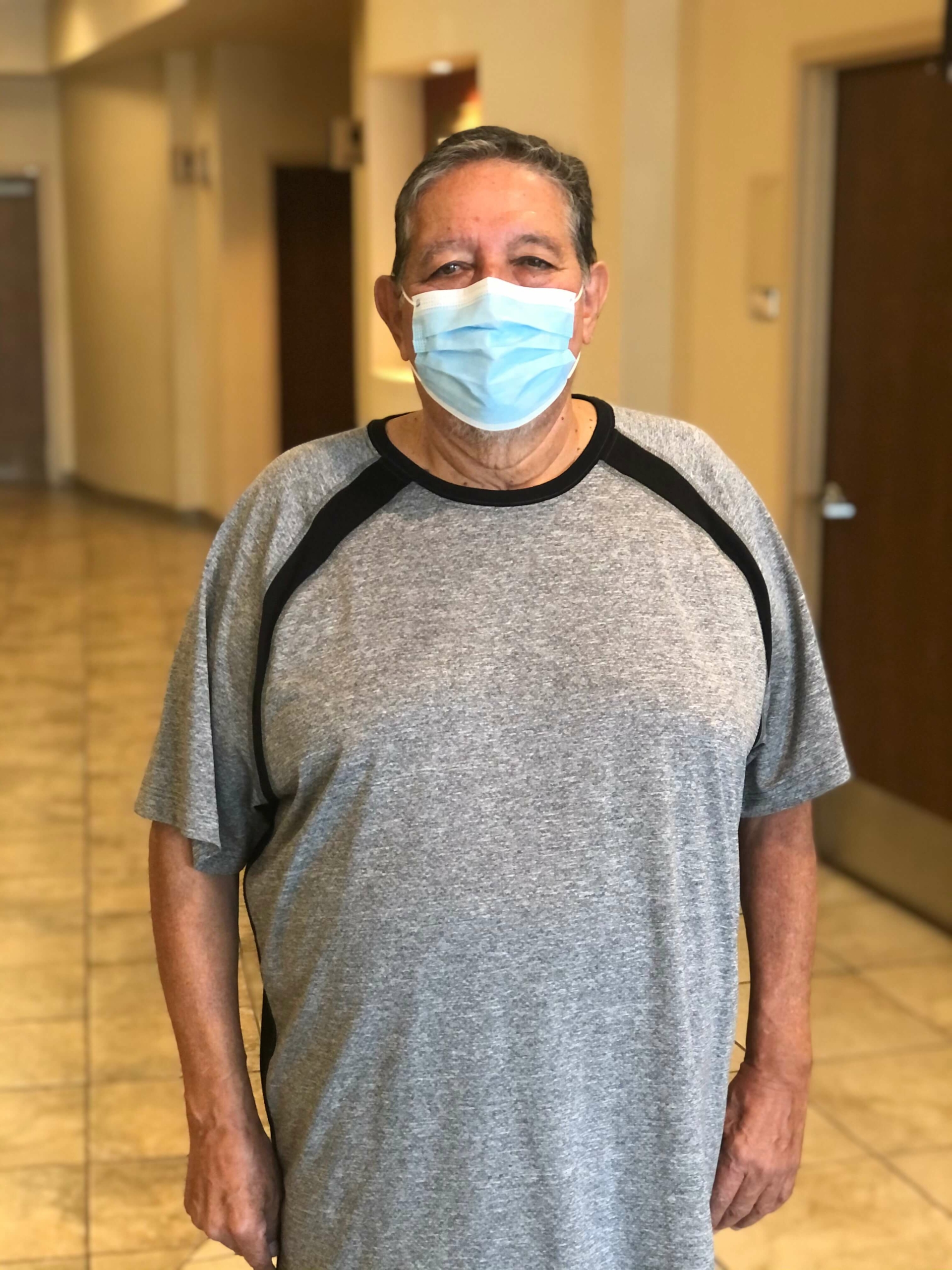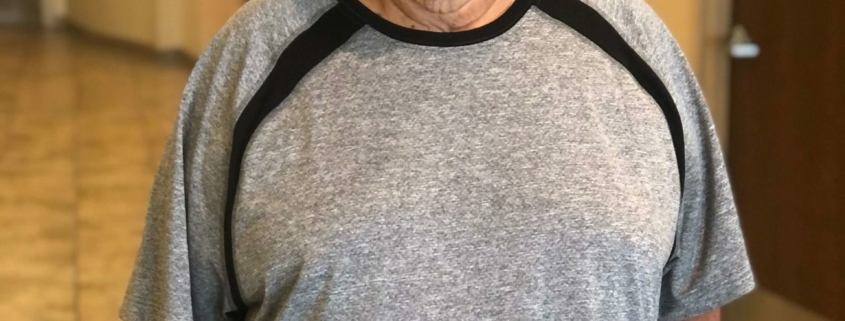
Ramon Segobia is a 68-year-old gentleman from Las Cruces, NM. He has lived an active and independent lifestyle with Irma, his wife of 50 years. Ramon loves to garden and spend time outdoors, hiking and fishing with his grandchildren. He also enjoys officiating high school sports such as football, basketball, and baseball.
Believing he was having a severe allergy attack one October day, Ramon went to the hospital. Tests revealed that the symptoms he experienced weren’t due to allergies, but COVID-19. Irma also tested positive for COVID-19. They were sent home with medications to rest and recover. Ramon’s symptoms worsened and he had to return to the hospital where he was placed on a ventilator. After almost a month in the hospital, Ramon received a tracheostomy and PEG tube for nutrition, remaining on the ventilator. Irma, meanwhile, was able to remain home and recovered well there.
In mid-November, Ramon was admitted to Advanced Care Hospital of Southern New Mexico (ACHSNM) to wean off of the ventilator and recover from the effects of COVID. When he arrived at ACHSNM, Ramon was completely dependent and had only awakened for the first time in almost a month. Ramon recalls being unable to move his left arm and leg when he first woke. He thought to himself that he had to do something to get better, so his family wouldn’t have to bear the burden of taking care of him forever.
With what he described as some “tough love” and the support of the ACHSNM staff, Ramon successfully weaned off the ventilator in just two weeks. He was decannulated two weeks after that. Soon after he passed his swallow study and gradually increased his ability to participate in therapy. He expressed his thankfulness for his occupational therapist, Nate, his nurses, Angelica, Alex, and Margarita, and his respiratory therapist, Rachel, who all pushed him to participate in his care and get stronger. After 37 days at ACHSNM, Ramon had progressed enough that he was ready to move to the next level of care where he could get even healthier, gain endurance, and prepare to go home.
Ramon was then admitted to the Rehabilitation Hospital of Southern New Mexico (RHSNM) in late December. At RHSNM, he quickly progressed with therapy and was able to tolerate a regular diet again. He says that his physical therapist, Brian, and his occupational therapist, Art, supported and pushed him to get moving quickly and motivated him to get better and get home. Ramon was successfully discharged home after only 15 days at RHSNM. He returned home to his wife, who thankfully had fully recovered herself, and began outpatient therapy at RHSNM in late January.
To this day, Ramon continues to improve with his mobility and endurance and says that he looks forward to getting healthier, losing more weight, and getting back to fishing with his grandchildren again very soon!


